|
Lighting it up!
Paul Chojnacky, Pasatiempo Golf Club, Santa Cruz, CA:

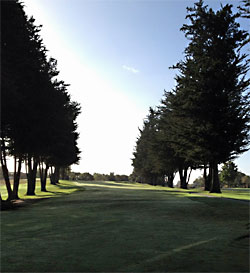 "The 6th-7th-8th corridor of Pasatiempo is a stretch of the golf course that is nothing to brag about. From an architectural standpoint, the trees that line this area of the golf course completely ruin the intended architecture. "The 6th-7th-8th corridor of Pasatiempo is a stretch of the golf course that is nothing to brag about. From an architectural standpoint, the trees that line this area of the golf course completely ruin the intended architecture.
The 7th hole is a short par-4 but the tee shot is visually intimidating as a long line of massive cypress trees creates a tunnel vision effect in ones mind. For several years, most tree work in this area has been delayed or pushed back. However, the aging trees have created a significant shade issue and a potential safety issue with many broken limbs. From a playability standpoint, the low hanging limbs were impacting golf shots and making the short par-4 play much more difficult.
During the week of November 14th, the golf course was closed due to aeration of greens, tees, and fairways. It also was an opportune time to complete a massive trimming project in this area without having players to work around. Twenty four cypress trees were limbed up 50-feet and the lateral growth was removed. This has dramatically changed the view from the tee, the overall playability of the 6th and 7th holes, and has substantially increased the amount of sunlight affecting the 8th green along with the fairways in this area.
No trees were removed during this phase of the project, but there is the possibility of taking some trees out in the future to really improve this area of the golf course."
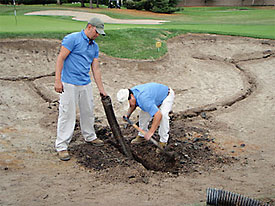
We started by removing the old sand as well as the old drain pipe and surrounding gravel. |
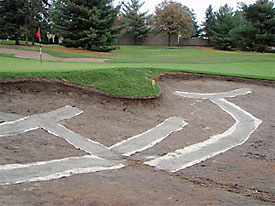
In this bunker we experimented with the drainage by lining the trenches with Sandtrapper II. We utilized drain pipe wrapped with a fabric sock. The pipe is then covered with sand.
|
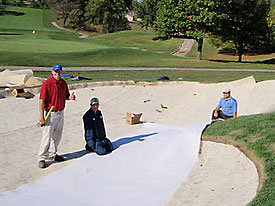
The sub grade is then covered with the Sandtrapper fabric. |
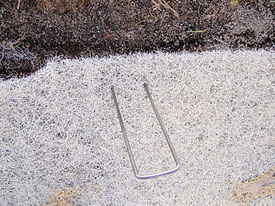
The fabric is held down by 6 inch sod staples spaced 8 inches apart.
|
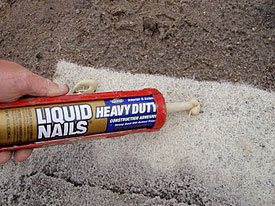
We then glued the staples to the fabric in an attempt to keep winter frost from pushing the staples out of the ground. |
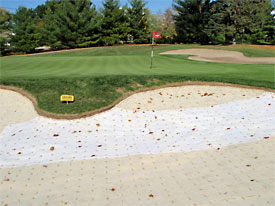
The end result - before sand. Notice we are also experimenting with two different Sandtrapper products.
|
The process has taken several days for a team of three people- we're learning as we go! For the bunker pictured above on #13 we used over 3,000 staples and 31 tubes of glue. We will be filling the bunker with sand tomorrow and are confident this bunker will perform much better in years to come.
Visit John's blog at wakondagrounds.blogspot.com
|